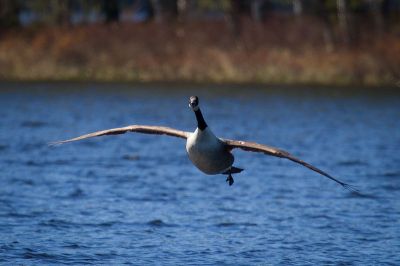How Arctic geese outrun climate change

Flying goose, fot. Autor Lars Falkdalen Lindahl (Praca własna) [CC BY-SA 3.0
Scientists studied traditionally Arctic-breeding geese that managed to reproduce successfully in new temperate regions. They investigated physiological trade-offs that the geese make to thrive in Arctic vs. temperate Central Europe habitats.
As the Arctic is experiencing some of the most rapid and severe climate
changes on Earth, its animal species must adapt or die. Scientists are
keen to understand adaptive responses so that they can better predict
the ecological impact of climate change.
The EU-funded GOOSEPHYSIOL project approached this problem by
studying Arctic barnacle geese, which have successfully spread into new
temperate environments over past decades.
Scientists predicted that geese from the Arctic would have decreased
parasite pressure. This hypothesis was supported, with researchers
finding fewer intestinal parasites in Arctic geese than in
temperate-breeding geese, meaning the risk of infection is greater in
the novel temperate breeding environment. They also found evidence of
adjustments in immunocompetence, with temperate-breeding geese
upregulating some but not all of the investigated immune factors.
The GOOSEPHYSIOL team showed that geese in climate-harsh Arctic
conditions grew much faster than temperate-breeding geese, reinforcing
the supposed benefits of breeding at higher latitudes. Importantly, this
has laid the foundation for future research investigating possible
trade-offs between immune defence and energy metabolism in young geese
raised in the different environments.
This research has yielded novel insights into the types of
physiological adaptations a species must make in order to adjust to
rapidly changing environments. It also highlights the importance of
animal migration and the ability to move to new habitats undeveloped by
humans.
published: 2015-03-10